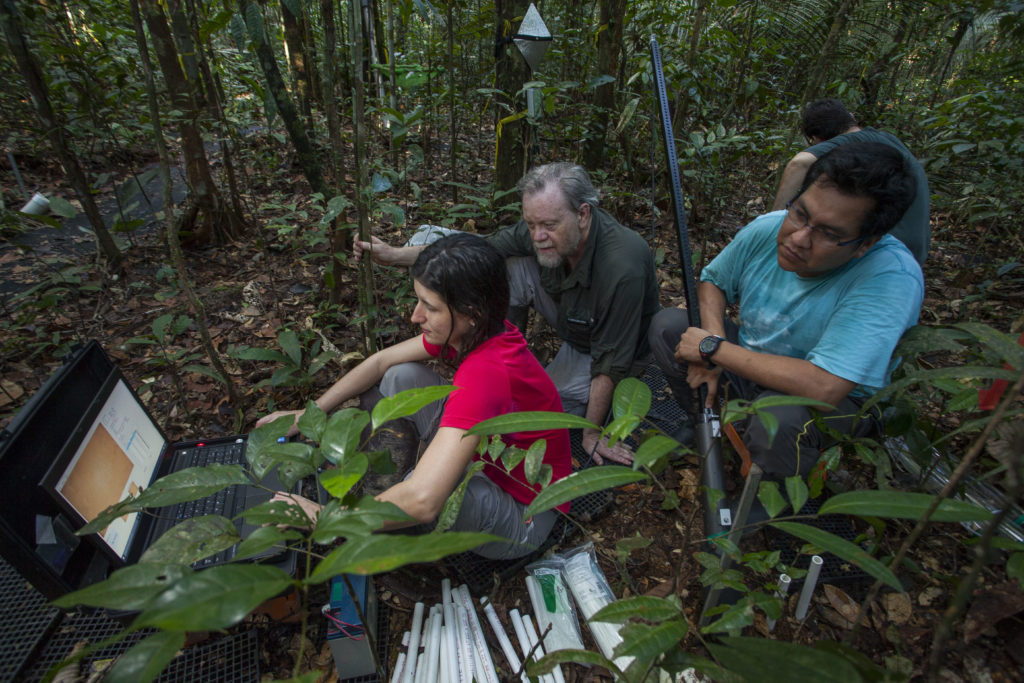An assessment of current approaches to including individual plant dynamics in ESMs and the need for new types of observations to benchmark these models
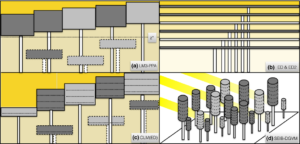
The Science
We reviewed the state of the science for models that have attempted to include the dynamics of individual plants, including their growth and death, within coupled Earth system models (ESMs). We review approaches to resolve environmental heterogeneity along key gradients of light, water, and nutrients, how differences in plant states determine the dynamics of competition fro resources, and issues of scaling from groups to individuals.
The Impact
We argue for the need for specific observations, including forest inventory data, rates of individual-level resource acquisition and use, and the observations that link individual-level growth and mortality rates to environmental conditions as key benchmarks to improve and test the next generation of ESMs.
Summary
The problem of including processes such as growth and mortality of individual trees is needed if we are to have a robust estimate of ecosystem responses and contributions to global change. ESMs have traditionally not included individual-level dynamics, instead using bulk ecosystem level properties. However, the limitations of this approach have become clearer and so multiple ESM groups are including plant demographic processes within them. We review multiple approaches across a wide range of ESMs, to discuss commonalities and differences between these approaches. In particular, we describe differing attempts to represent size- and trait-structured competition for within the canopy, water and nutrients underground, and the role of disturbance and mortality processes in governing ecosystem heterogeneity. We describe a set of requirements for testing and benchmarking the models, with a focus on the need to test the competition among individuals for resources, and the need for observations that test scaling between individual-level vital rates and environmental conditions.
Contacts (BER PM): Daniel Stover, SC-23.1, Daniel.Stover@science.doe.gov (301-903-0289)
Dorothy Koch, SC-23.1, Dorothy.koch@science.doe.gov (301-903-0105)
Renu Joseph, SC-23.1, renu.joseph@science.doe.gov (301-903-9237)
PI Contact: Rosie Fisher, National Center For Atmospheric Research, rfisher@ucar.edu (303.497.1706)
Charles Koven, Lawrence Berkeley National Lab, cdkoven@lbl.gov (510.486.6724)
Funding
CDK, BC, RK, JH, TP, JS, CX & SPS were supported by the Next-Generation Ecosystem Experiments (NGEE-Tropics) project that is supported by the Office of Biological and Environmental Research in the Department of Energy, Office of Science
Publications
Fisher, R. A., Koven, C. D., Anderegg, W. R. L., Christoffersen, B. O., Dietze, M. C., Farrior, C., Holm, J. A., Hurtt, G., Knox, R. G., Lawrence, P. J., Lichststein, J. W., Longo, M., Matheny, A. M., Medvigy, D., Muller-Landau, H. C., Powell, T. L., Serbin, S. P., Sato, H., Shuman, J., Smith, B., Trugman, A. T., Viskari, T., Verbeeck, H., Weng, E., Xu, C., Xu, X., Zhang, T. and Moorcroft, P., “Vegetation Demographics in Earth System Models: a review of progress and priorities”. Global Change Biology, 24(1), 35–54, DOI:10.1111/gcb.13910.
 We use a trait-based carbon optimality approach to model leaf longevity (LL, in days), and assess the model performance with in-situ LL data for 105 species in two tropical forests in Panama. More specifically, we examine the relative impact of leaf ageing rate (i.e. the rate at which leaf photosynthetic capacity declines with age) and within-canopy variation in light environment on the modeled LL. We first assumed that all species have the same leaf ageing rate (i.e. the community average value) and receive the same light condition (i.e. canopy-level light), and the results are shown in panel a, with a correlation coefficient r=0.08 which is not significant. Then we performed the analysis with species-specific leaf ageing rates, while assuming that all species receive the same light condition (i.e. canopy-level light), and the results are shown in panel b, with r=0.53 and p-value<<0.001. We lastly performed the analysis with species-specific leaf ageing rate and light environment, and the results are shown in panel c, with r=0.66 and p-value <<0.001. Our results thus suggest that both leaf aging rate and within-canopy variation in light environment are essential for modeling LL in the tropics, and the best model can capture over 40% of interspecific variability in LL, including those species from canopy and understory.
We use a trait-based carbon optimality approach to model leaf longevity (LL, in days), and assess the model performance with in-situ LL data for 105 species in two tropical forests in Panama. More specifically, we examine the relative impact of leaf ageing rate (i.e. the rate at which leaf photosynthetic capacity declines with age) and within-canopy variation in light environment on the modeled LL. We first assumed that all species have the same leaf ageing rate (i.e. the community average value) and receive the same light condition (i.e. canopy-level light), and the results are shown in panel a, with a correlation coefficient r=0.08 which is not significant. Then we performed the analysis with species-specific leaf ageing rates, while assuming that all species receive the same light condition (i.e. canopy-level light), and the results are shown in panel b, with r=0.53 and p-value<<0.001. We lastly performed the analysis with species-specific leaf ageing rate and light environment, and the results are shown in panel c, with r=0.66 and p-value <<0.001. Our results thus suggest that both leaf aging rate and within-canopy variation in light environment are essential for modeling LL in the tropics, and the best model can capture over 40% of interspecific variability in LL, including those species from canopy and understory.
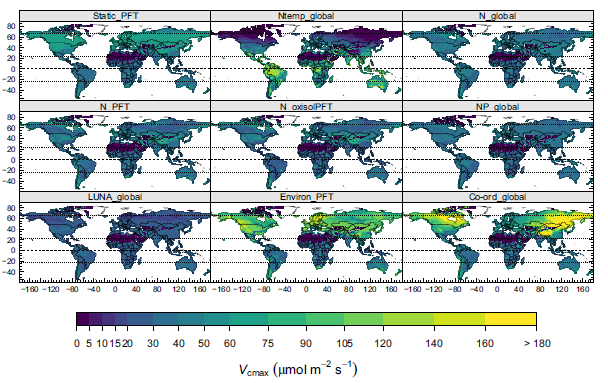
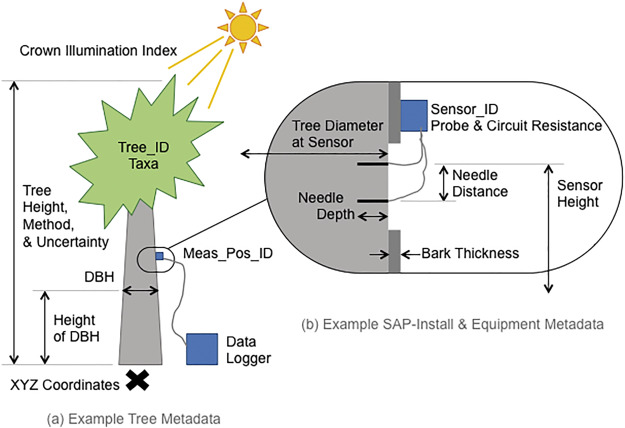
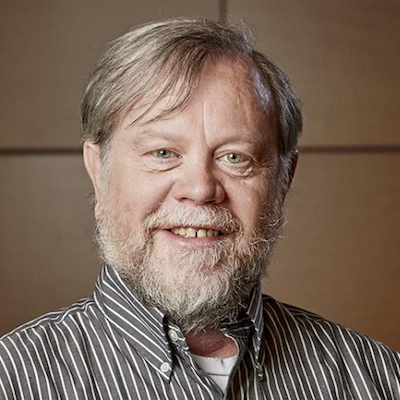 Dr. Richard Norby, UT Battelle Corporate Research Fellow in the Environmental Sciences Division, Climate Change Science Institute at Oak Ridge National Laboratory and Joint Professor in the Bredesen Center for Interdisciplinary Research and Graduate Education, has been named a Fellow in the American Geophysical Union (AGU).
Dr. Richard Norby, UT Battelle Corporate Research Fellow in the Environmental Sciences Division, Climate Change Science Institute at Oak Ridge National Laboratory and Joint Professor in the Bredesen Center for Interdisciplinary Research and Graduate Education, has been named a Fellow in the American Geophysical Union (AGU).